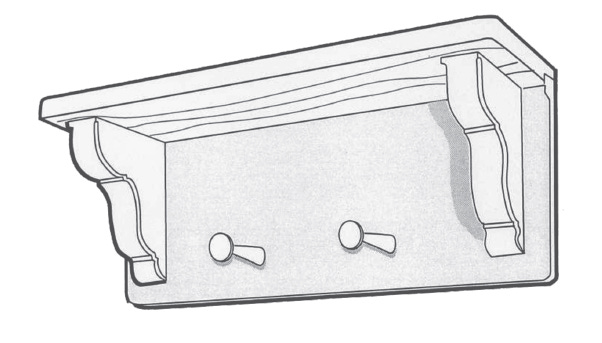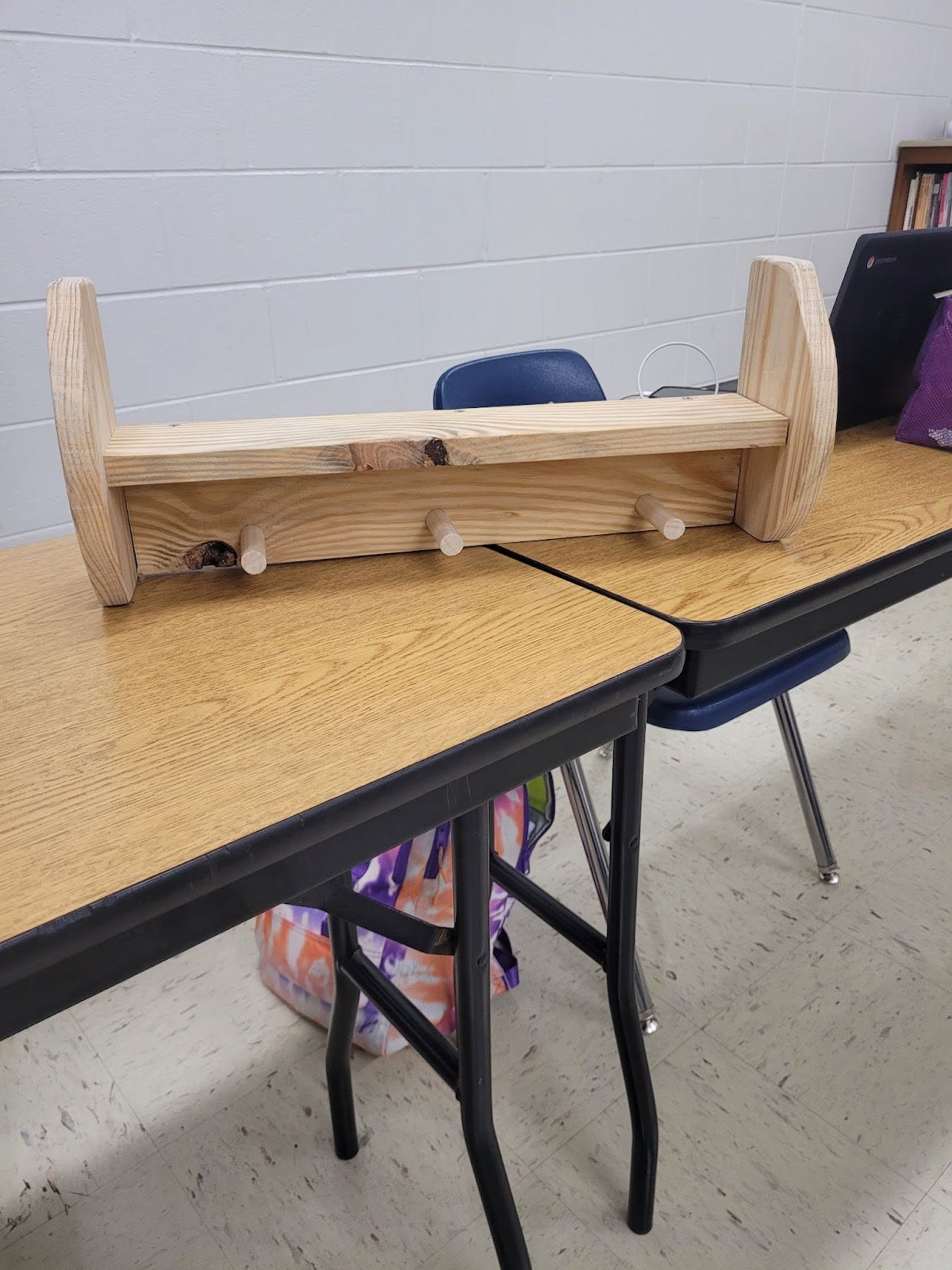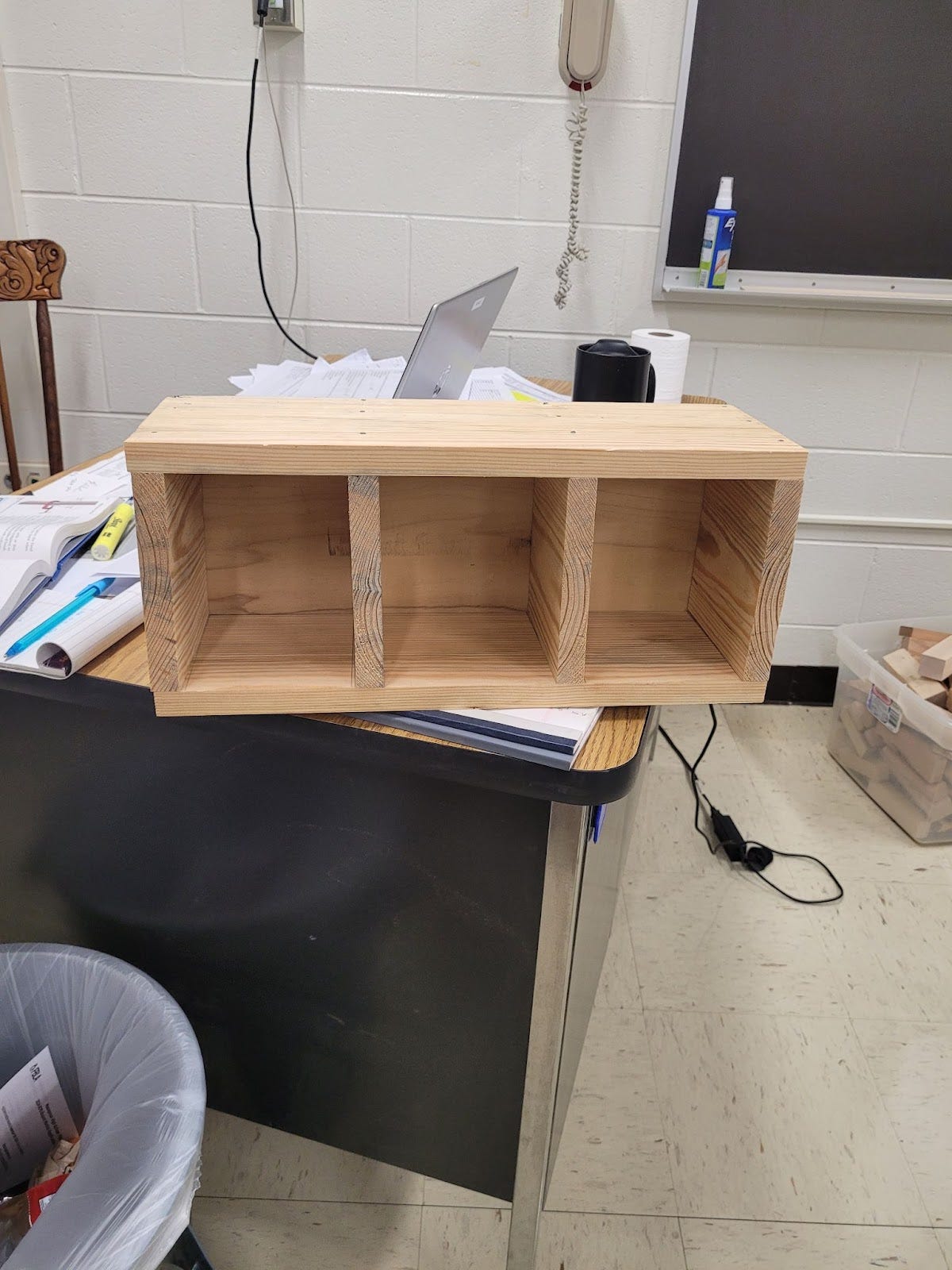I really enjoy projects that give me opportunities to adapt for greater complexity or creativity. A shelf is one of those. As students were working on their shelves, I marveled at how we could take the Minwax collectible shelf and change it into something “new” with only a few changes. I thought that this group might like to add it to your collection of possible student projects.
The design opportunities are nearly endless and you can adapt the plans or involvement for any level.
Extreme advanced students - Give them parameters and have them design, process the material, and build the project with minimal support.
Extreme beginner students - Give them all of the pre-cut pieces and have them help you to assemble the shelf.
In between - Depending on their level, offer for them to come up with design changes. Have them process the material or assist you to do it. Have them do the machine/hand tool work, only stepping in when needed. Use this project to teach a specific tool(s).
Machine work vs hand tool. Great opportunity to teach either one or a blend.
Need to make it more complex? Add a drawer. Add an additional shelf. Require more difficult joinery. Require the pieces to be different thicknesses. Have them turn it into a paper towel holder with a shelf (just be careful where you buy your paper towels from and measure accordingly).
This shelf plan was from one of those “Build it in a Weekend”.
This student wanted compartments. We had a great discussion about using thinner pieces when we’re not concerned about structural integrity to help ‘lighten’ the look. This was going to sit on a bookshelf to hold different items.
To help get students to connect with the project, I asked each one what they would use the shelf for. Most students were excited about adding this to their house/room and had a plan for it. We adapted it as needed per student, depending on the projected use. Example: I had a student who wanted to use it for their medals that they won so we used smaller hooks spaced a couple of inches apart, filling the vertical piece.
Grading. I’m going to write a piece about this next week but wanted to include a snapshot here. There’s mixed feelings about critiquing someone’s work and I’ve seen the spectrum from ‘false positivity and congratulatory exclamations’ to ‘if it’s not perfect, it’s garbage’.
My offering: if expectations need to be met, then make sure the students know them prior to working. With that, expectations are a way to help students understand what craftsmanship is. But the instructor needs to make sure the expectations are reasonable and meet the students where they are, while nudging them forward.
Stay tuned for more on that subject.
I’ve had a high success rate with this project and I’ve had year two students share with me what they’ve done with their shelves and how they’re holding up.
I’ve also given students the opportunity to build a “better one” later in the year or the next. It’s enjoyable to see how their skills have progressed.
As always, let me know what I can do to help you with your students. And thank you to everyone who has commented on my posts, I enjoy your experiences and thoughts.



